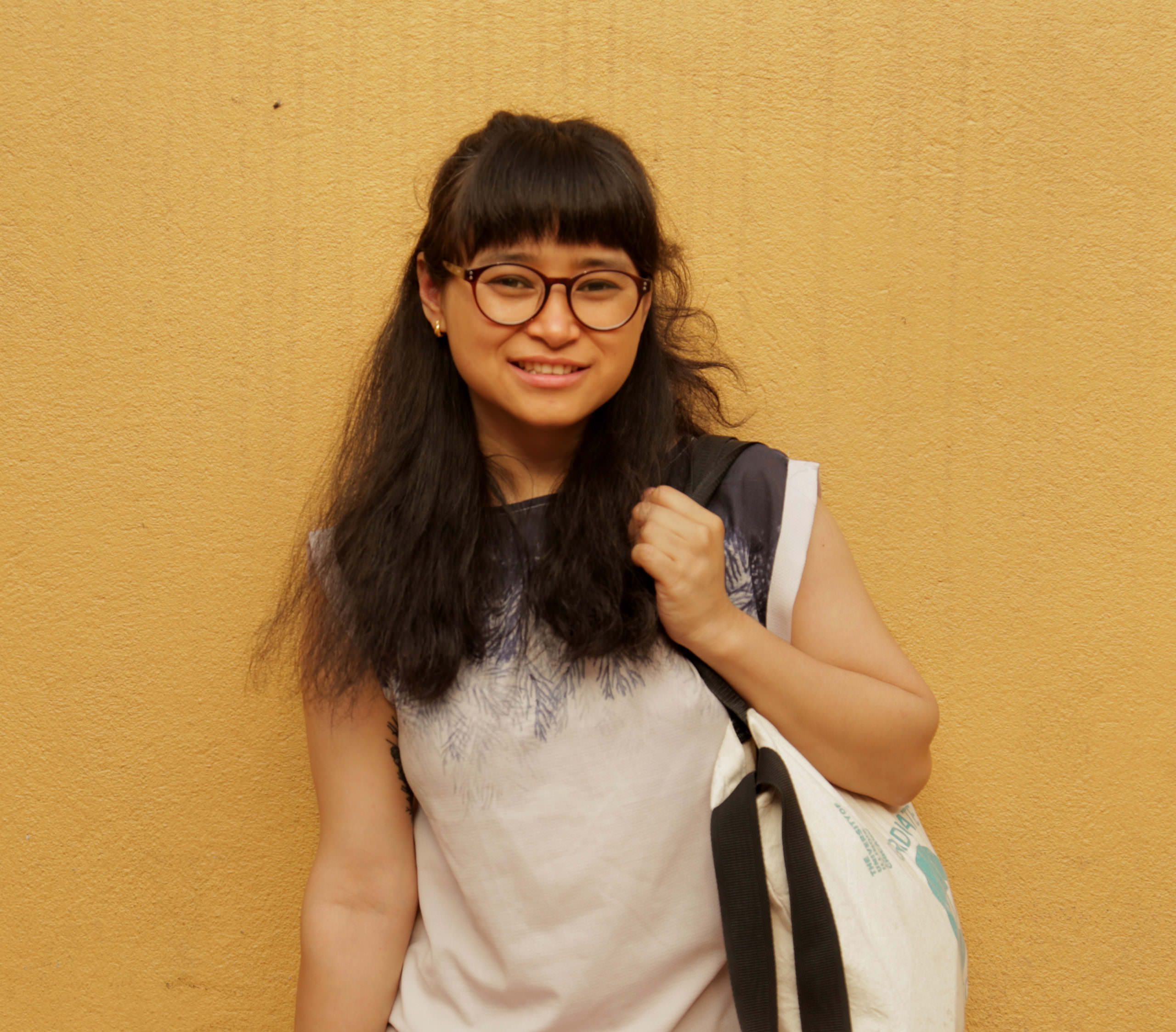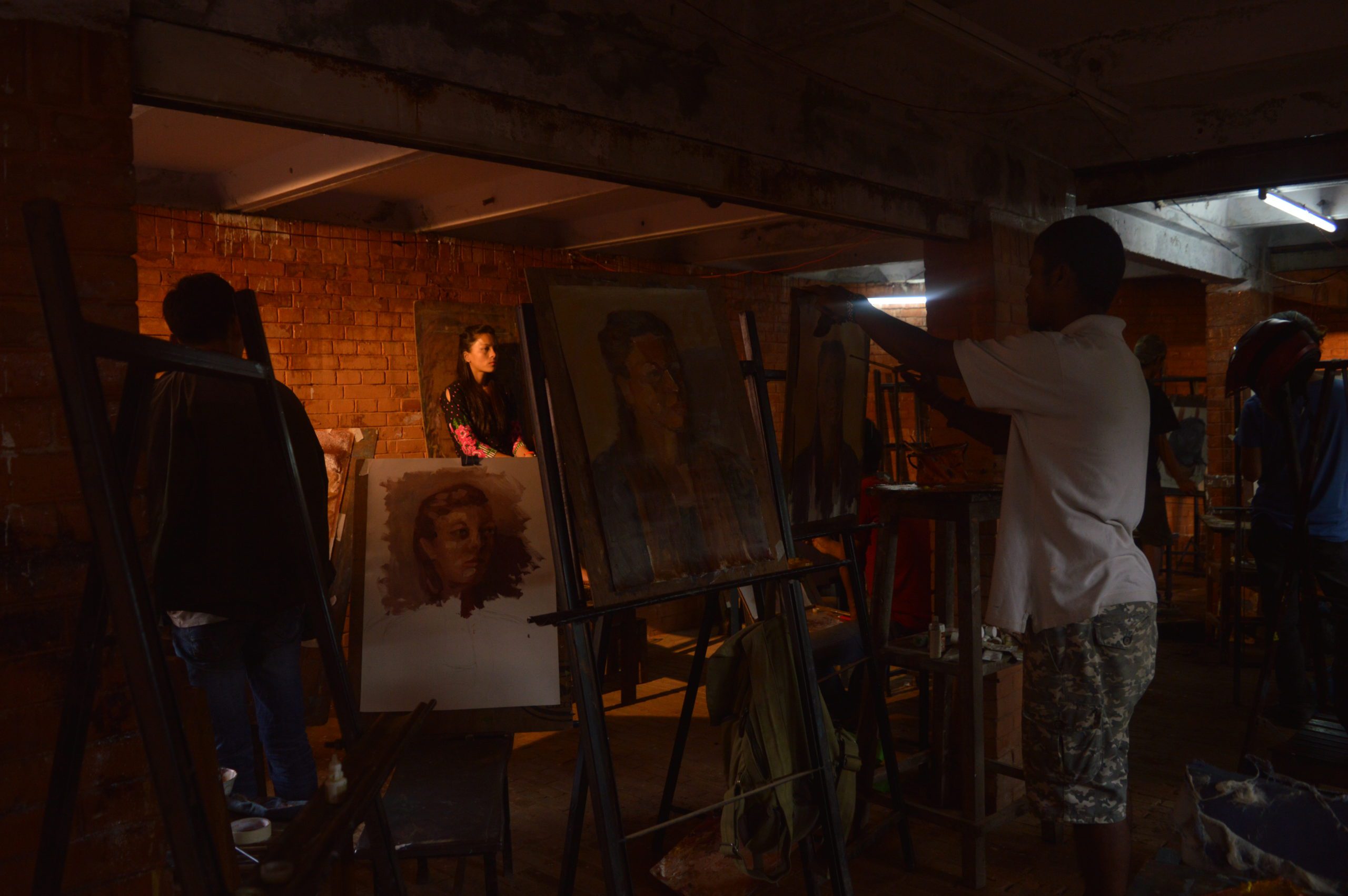
This week, the Nepal Mandala Symposium will take an in-depth look at Nepal’s artistic heritage, its place in Asia’s artistic ecosystem, and the continuing practice of Indic Buddhist traditions. Dipti Sherchan, a graduate student at the Department of Anthropology in the University of Illinois at Chicago, will join the panel “Nepal Mandala in the Intra- and Trans-Regional Context.” We sat down with her to learn more about her expertise in the anthropology of state and art, and the emergence of the Juddha Kala Pathshala art school in Nepal — a unique and one-of-a-kind cultural institution in Kathmandu.
Can you tell us a little about your background and your current research? What drove you to pursue this type of research?
I am a graduate student at the Department of Anthropology in the University of Illinois at Chicago. I am broadly interested in the intersections of anthropology of state and art; particularly, the relationship between artists, cultural institutions, and the nation-state. Questions of tradition and modernity underscore my field of inquiry. My dissertation research focuses on the everyday experiences and artistic articulations of a multi-generational cohort of Nepali women artists who forge affiliations and affinities within and beyond the national and transnational milieu of the “artworld.” I am interested in understanding how the category of “generation” operates vis-à-vis the notion of “canon” in the cultural politics of artistic practices as well as the practice of writing art histories.
The world of art, artistic production and consumption, and display has always fascinated me. But it was never a point of academic curiosity until I joined the graduate program, where I started taking courses in both anthropology and art history departments. Both disciplines are interested in categories of culture, institutions, and modernity, however, there is a discursive chasm when it comes to bridging the two worlds. So, I became interested in exploring an inter-disciplinary approach — both theoretically and methodologically — in conducting an ethnography of the artworld. Additionally, the art historical canon is often driven by singular and monolithic Euro-American as well as South/Pan-Asian notions of tradition, modernity, and artistic practices that undermine the multivalent ways in which non-normative (for lack of a better word) subjects practice, experience, and articulate their artworld. My research is driven with the objective of demystifying the ontological divide between the artworld and the world of politics because artists are active, political subjects who make, move, and mediate the aesthetic and discursive worlds that they belong to.
At the Nepal Mandala Symposium, you’ll be discussing the emergence of an art school during the late Rana period in Nepal. Can you explain the significance of this school, and the time period within which it emerged?
Juddha Kala Pathshala was established in the early 1940s by the then Rana prime minister, Juddha Shumsher Jang Bahadur Rana (r. 1932-1945). During my preliminary research on the artworld of Nepal, I came across various sources that mentioned the Pathshala as the “first art school” of Nepal. Key interlocutors during my fieldwork also confirmed that the school was in fact one of its kind. However, there is a dearth of archival material regarding the school. Therefore, there are still contestations around when, why, and how it emerged. What is evident is that the school occupies an important node in the history of art pedagogy and practice in Nepal. Moreover, the emergence of the art school during the late Rana period (1940s) is tethered to a crucial political milieu in both the global South and North.
Scholars of Nepal have written extensively on the cultural politics of the Rana period and argued that the late Rana period needs to be understood within a long-durée of the 50s wherein the political, social, and cultural orders were shifting. They illustrate the workings of the statecraft and patronage of nation-building and development in relation to shifting global relations of power post-World War II and decolonization. So, the existing Rana patronage of arts production, consumption, and circulation also comes under duress during this period wherein the thriving courtly painting tradition is dwindling, sacred art traditions have entered the global-stage and art market circuit, and secular art practices signal to the sovereign positions of emerging “modern” nation-states like Nepal.
Juddha Kala Pathshala as an “aspirational” cultural institution with patrons from an aristocratic, oligarchic regime that is under threat of demise can offer salient insights in understanding the relation between power and culture. The emergence of the art school signals both disruptions and continuities in the discourse of tradition and modernity that bookend the aesthetic and political subjectivities of individuals who practice art in this changing socio-political order.

Undergraduate students of Fine Arts program learning live model drawing at Lalit Kala Campus, Kathmandu, Nepal 2018.
How has the school changed or remained the same over time? What impact did it have on the development of art and the artistic ecosystem in Nepal?
Juddha Kala Pathshala as an art institution has lived many iterations since its emergence. It is unclear whether the Pathshala followed any distinct pedagogical model or design that was endorsed by the Rana regime, however, few literatures illustrate the school as a workshop facility that was closely associated with the vocational and textile school based on the model of cottage industry promoted by Juddha Shumsher Rana. Few of the earliest students of the art school, during personal interviews, remember receiving a stipend in return for attending the school. One of the certificates received by the student shows that they were taught oil painting, watercolor, and sculpture, along with subjects like Nepali and English. The Pathshala operated under the same name for more than two decades, but with the demands of changing education policy and shifting political regimes, not only did the curriculum and pedagogy of the school transform, its name was also changed to Lalit Kala (Fine Arts) Campus.
Despite this, the school became a thriving cultural space for the practice and promotion of art and the artistic ecosystem in Nepal. The earliest “masters” of modern art (in this case, modern signaling a shift from conventions of sacred art traditions) were all pedagogues at the institution: Keshav Duwadi, Tej Bahadur Chitrakar, Chandra Bahadur Manandhar, Kalidas Shrestha, Jib Ratna Shakya, and Shashi Bikram Shah. The school also maintained ties with the national cultural institutions like the Royal Nepal Academy, the National Association of Fine Arts, and the Nepal Art Council that shaped the course of Nepali art practices, discourses, and histories. Many contemporary cohorts of younger generations of artists have emerged out of the institutional space of the school, going on to become practitioners and educators of art in Nepal. It is also important to remember that the site continues to operate as a gendered and classed space of power relations. With the emergence of a couple of private art institutions in the Valley, the school remains the only government college for students within and outside of Kathmandu to study fine arts.
What impact has the school had on the social, cultural, or political aspects of modern Nepal?
The art school’s obscure yet pioneering status in art pedagogy in Nepal needs to be contextualized in the socio-political milieu of the twentieth century in order to understand how it has shaped the social, cultural, and political contours of modern Nepal. The twentieth century modern nation-state of Nepal emerged at the crossroads of global modernity and post-colonialism. However, it has always occupied a contested space of non-postcolonialism. So, the art school as a cultural institution at the intersection of tradition and modernity becomes a site to conform and contest notions of tradition and modernity.
For many, the school signals a disruption and breakaway from traditions; introducing a non-native (for the lack of a better word) system of learning and practicing arts that is no longer sacred but “secular” and institutional at a scale of state-sponsorship (instead of a community-oriented, generational transfer of knowledge). For some, the school provides a space for both traditional and modern aesthetic knowledge systems to coexist. This signifies a shifting political ecology of art practice in Nepal, and this ecology is intricately tethered to the emergent discourses on the modern nation-state of Nepal. Ideas of progress, modernization, and development that shape “modern Nepal” become resonant with ideas of what is Nepali art and who is a Nepali artist.
The modern nation needs a worthy modern subject. Does the art school become a site to discursively produce a subject of modernity or a space to contest those subjectivities? The art school is intimately tied to the project (and myth) of modern Nepal because it is part of the cultural milieu that produces and reproduces fraught notions of what it means to be modern. ☆
To learn more about the Nepal Mandala Symposium from December 5–7, 2019, click here.
☆ All opinions expressed by our interview subjects are their own and do not reflect the views of the Mittal Institute and its staff.
